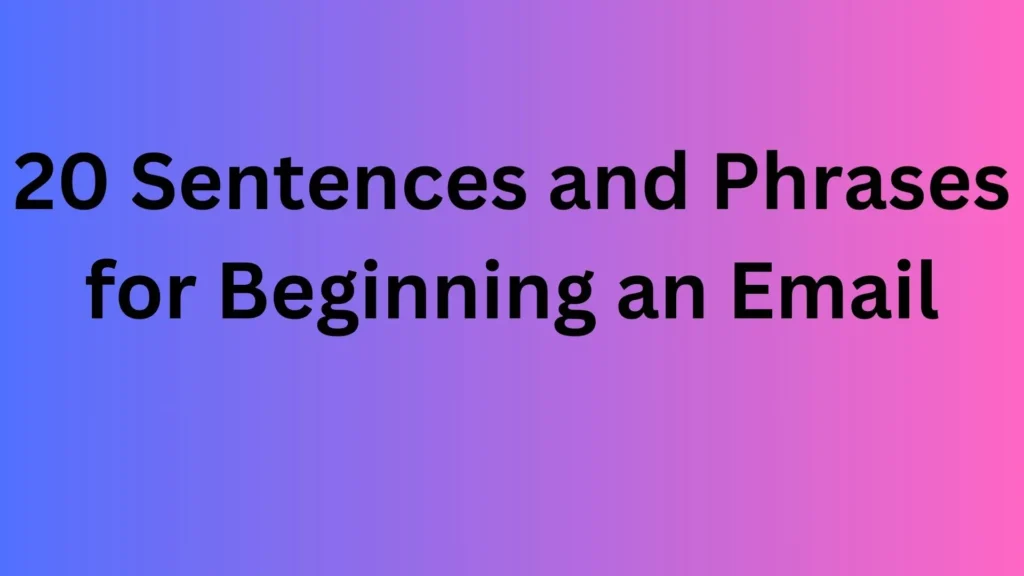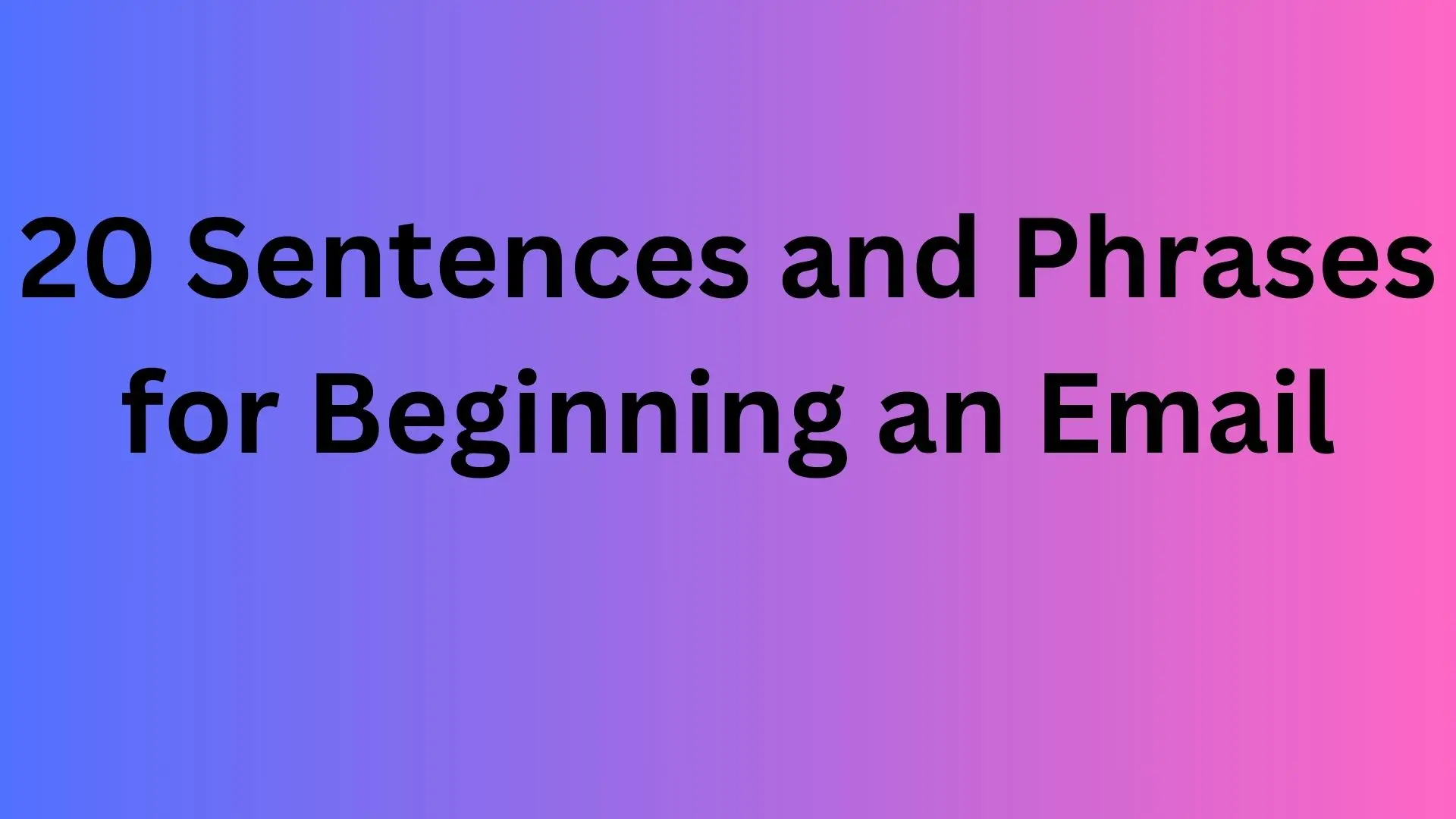Email communication is a fundamental aspect of modern professional and personal correspondence. The way you start an email sets the tone for the entire message and can greatly influence the recipient’s perception. Whether you’re writing a formal business email or a friendly message, here are 20 sentences and phrases for effectively beginning your emails:

“Dear [Recipient’s Name],”
A classic and formal way to address someone, commonly used in business and professional emails.
“Hello [Recipient’s Name],”
A friendly and neutral salutation suitable for various contexts.
“Hi [Recipient’s Name],”
A casual and informal way to greet someone, often used in personal or less formal emails.
“Good [morning/afternoon/evening],”
A polite way to acknowledge the time of day and initiate the conversation.
“I hope this email finds you well.”
An opening phrase that expresses goodwill and consideration for the recipient’s state of being.
“I trust this message finds you in good health.”
A more formal variation of the previous phrase, commonly used in professional correspondence.
“I wanted to touch base with you regarding [topic].”
A direct way to introduce the purpose of your email and set expectations.
“I am writing to inquire about [topic].”
A straightforward introduction for seeking information or clarification.
“I’m reaching out to discuss [topic].”
An effective way to signal the subject of your email and the reason for your communication.
“I hope you’re having a great day so far.”
A friendly and conversational opening line to establish a positive atmosphere.
“It’s been a while since we last connected.”
A polite way to acknowledge a lapse in communication and reconnect with someone.
“Thank you for your prompt response to my previous email.”
A gracious way to acknowledge and appreciate someone’s previous cooperation.
“I wanted to follow up on our recent conversation.”
An introduction for referencing a previous discussion or interaction.
“I’m excited to share some exciting news.”
A compelling way to generate interest and anticipation for the content of your email.
“I appreciate your time and attention to this matter.”
A courteous expression of gratitude for the recipient’s consideration of your request.
“I’m writing to request your assistance with [task].”
A direct approach to seeking help or collaboration on a specific task.
“I hope this email doesn’t interrupt your busy schedule.”
A polite way to acknowledge the recipient’s potential busyness and show consideration.
“I wanted to introduce myself as [Your Name], and I work in [Your Position] at [Your Company].”
An informative and professional introduction for initial contact.
“Per our recent discussion, I wanted to provide you with an update on [topic].”
An effective way to link your email to a prior conversation and offer updates or information.
“I’m delighted to inform you that [positive news].”
A cheerful and enthusiastic start to share good news or accomplishments.
Conclusion:
The way you begin an email plays a crucial role in establishing a connection with the recipient and conveying the tone and purpose of your message. Whether you opt for a formal salutation or a casual greeting, using the right sentences and phrases can help you make a positive impression and enhance the effectiveness of your email communication.

